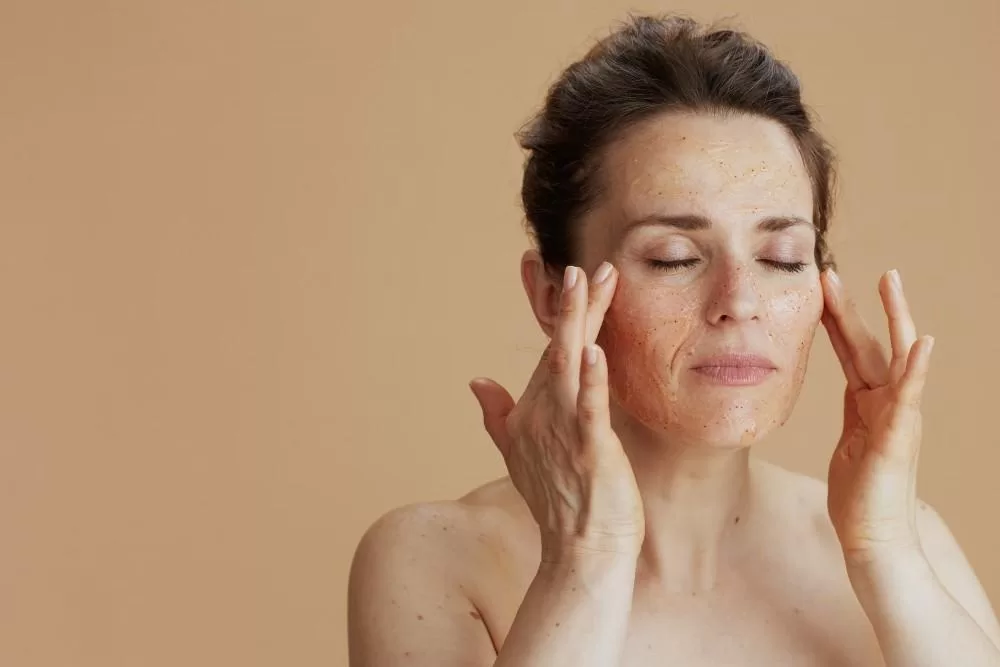Understanding the Moon Face Trend and the Impact of Stress on Facial Appearance
The “moon face” trend refers to a round, puffy face shape that some people experience due to various factors. This look often results from conditions like Cushing’s syndrome or the side effects of corticosteroid medication. However, many have recently noted that stress can change your face shape, contributing to the moon face appearance.
What is the Moon Face Trend?
The term “moon face” describes a round, full facial appearance caused by the accumulation of fat in the face. Medical professionals often associate this look with Cushing’s syndrome, a condition where the body produces too much cortisol, a stress hormone. However, people also use “moon face” more loosely to describe any puffy or swollen appearance of the face, especially in response to stress, poor diet, or certain medications.

How Stress Can Impact Your Face Shape
Stress affects the body in many ways, including the skin and facial structure. When you’re stressed, your body releases cortisol, which is crucial in the “fight or flight” response. While cortisol is essential for survival, chronic stress elevates this hormone’s levels, leading to various issues, including changes to your facial appearance.

- Cortisol and Fat Distribution: High cortisol levels increase fat deposits in the face and abdomen, contributing to a fuller, rounder face, commonly referred to as “moon face.”
- Water Retention: Stress can also cause your body to retain water, leading to swelling in various parts of the body, including the face. This puffiness can further exaggerate the moon face appearance.
- Muscle Tension: Stress tenses muscles, including those in your face, which can lead to changes in facial expressions and, over time, even the structure of your face. Chronic tension makes features appear more rigid or causes fine lines and wrinkles to develop.
- Skin Health: Stress disrupts the skin’s barrier function, leading to issues like dryness, breakouts, and inflammation. These conditions alter the texture and overall appearance of your face, contributing to a less defined facial structure.

Big Book of Homemade Products for Your Skin, Health and Home, The: Easy, All-Natural DIY Projects Using Herbs, Flowers and Other Plants (cover may vary)
Can You Reverse the Effects?
The good news is that many of the changes associated with stress-related moon face can be managed or reversed.
Products and Tips to Combat Moon Face
- Adaptogens: Supplements like ashwagandha and rhodiola help manage stress and balance cortisol levels. These can be a valuable addition to your routine if stress contributes to facial puffiness. These can be a valuable addition to your routine if stress is contributing to facial puffiness.
- Anti-Inflammatory Diet: Incorporate foods rich in omega-3 fatty acids, antioxidants, and hydration to reduce inflammation and water retention. Avoid excessive salt and processed foods, which can exacerbate puffiness.
- Lymphatic Drainage Massage: Regular facial massages, particularly those focusing on lymphatic drainage, can help reduce swelling.
- Hydration and Sleep: Ensure you are well-hydrated and getting adequate sleep.
- Topical Products: Skincare products containing ingredients like caffeine, which constricts blood vessels, can temporarily reduce puffiness.
- Exercise: Regular physical activity can help reduce stress, balance hormones, and improve overall body composition, including facial fat distribution.


FAQs: The Moon Face Trend Explained
1. What is the “Moon Face” Trend?
- The “moon face” trend refers to a round, full facial appearance often associated with conditions like Cushing’s syndrome.
- It’s also used more broadly to describe any puffy or swollen appearance of the face, particularly in response to stress, poor diet, or certain medications.
2. How Does Stress Cause Moon Face?
- Cortisol and Fat Distribution: Stress increases cortisol levels, leading to fat accumulation in the face and abdomen.
- Water Retention: Stress can cause water retention, leading to facial swelling.
- Muscle Tension: Stress tenses facial muscles, affecting facial expressions and potentially contributing to changes in facial structure.
- Skin Health: Stress disrupts the skin’s barrier, leading to dryness and inflammation, which can alter facial appearance.
3. Can I Reverse the Effects of Stress on My Face?
- Yes!
- Stress Management Techniques: Practice stress-reducing techniques like meditation, yoga, or deep breathing exercises.
- Healthy Diet: Focus on anti-inflammatory foods, hydrate well, and limit processed foods and excessive salt.
- Lymphatic Drainage Massage: Gentle facial massage can help reduce swelling.
- Hydration and Sleep: Prioritize adequate sleep and water intake.
- Topical Products: Consider using skincare products with ingredients like caffeine to temporarily reduce puffiness.
- Exercise: Regular physical activity helps reduce stress and improve overall health.
4. Where Can I Find More Information on Stress and Facial Appearance?
- Consult a Healthcare Professional: For personalized advice and to rule out any underlying medical conditions.
- Consult a Dermatologist: For guidance on skincare products and treatments.
- Reliable Health and Wellness Websites: Reputable sources provide information on stress management, nutrition, and skincare.
Disclaimer: This information is for general knowledge and informational purposes only and does not constitute medical advice.
Conclusion
The moon face trend highlights a common concern about stress’s effects on our appearance. While the term may be trendy, the underlying causes are serious and should be addressed through proper stress management, diet, and skincare. By understanding the link between stress and facial changes, you can take proactive steps to maintain a healthy, well-defined face.

Explore more articles like this @ Where And How Resources
If you found this article helpful, don’t forget to share it with your friends and followers!

